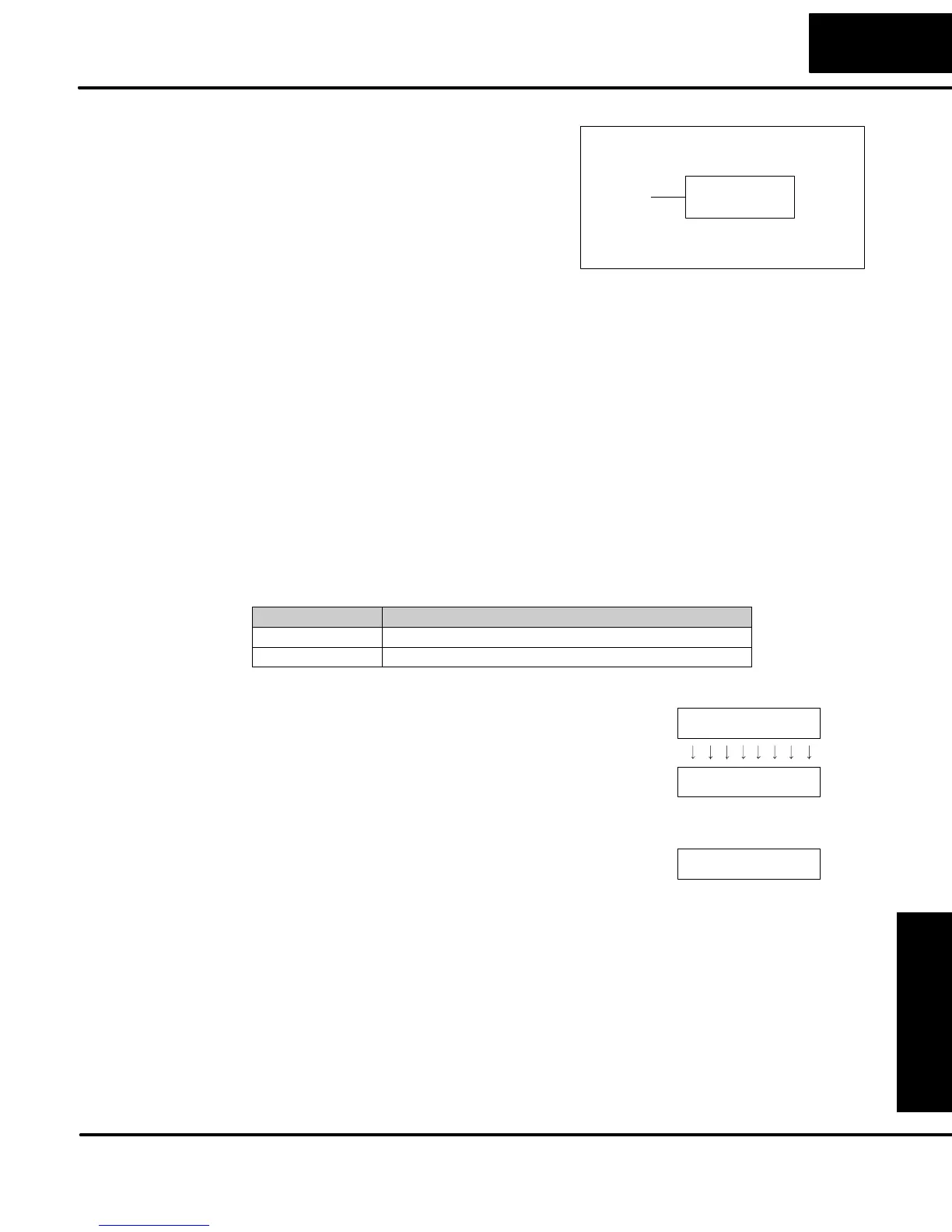Standard
RLL Instructions
5–89
Standard RLL Instructions
Number Conversion Instructions
SFLDGT
The Shuffle Digits instruction shuffles a
maximum of 8 digits rearranging them in a
specified order. This function requires
parameters to be loaded into the first level
of the accumulator stack and the
accumulator with two additional
instructions. Listed below are the steps
necessary to use the shuffle digit function.
The example on the following page shows
a program for the Shuffle Digits function.
Step 1:— Load the value (digits) to be shuffled into the first level of the accumulator
stack.
Step 2:— Load the order that the digits will be shuffled to into the accumulator.
Note:— If the number used to specify the order contains a 0 or 9–F, the
corresponding position will be set to 0.
See example on the next page.
Note:—If the number used to specify the order contains duplicate numbers, the
most significant duplicate number is valid. The result resides in the accumulator.
See example on the next page.
Step 3:— Insert the SFLDGT instruction.
Discrete Bit Flags Description
SP63 On when the result of the instruction causes the value in the accumulator to be zero.
SP70 On anytime the value in the accumulator is negative.
There are a maximum of 8 digits that can
be shuffled. The bit positions in the first
level of the accumulator stack defines the
digits to be shuffled. They correspond to
the bit positions in the accumulator that
define the order the digits will be shuffled.
The digits are shuffled and the result
resides in the accumulator.
Digits to be
shuffled (first stack location)
Specified order (accumulator)
DEF 09ABC
36541287
Result (accumulator)
0DA9BCEF
43218765
Bit Positions
Shuffle Digits
(SFLDGT)
Shuffle Digits
Block Diagram

